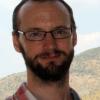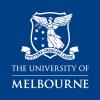Research leader
Research team
End User representatives
This project was commissioned and funded entirely by the Department of Environment, Land, Water and Planning, Victoria.
Burn or vegetation indices are commonly used in mapping the burned extent and severity of a fire using remotely sensed imagery. These indices highlight parts of the spectrum that are most responsive to changes in vegetation and soil following fire. For example, the reflectance in the near infrared (NIR; 0.70-1.30 μm) region typically decreases following fire due to consumption and damage to leaves (Epting et al. 2005). Additionally reflectance in the short wave infrared (SWIR; 1.30-2.50 μm) region typically increases due to a reduction in moisture, the temperature measured from the thermal infrared (TIR; 8-14 μm) region typically increases following fire due to a decrease in transpirational cooling (Epting et al. 2005), and the emissivity decreases due to exposure of lower emissivity soil. While many of these indices are applied to single images, bi-temporal images are also often used to account for the difference between pre and post-fire imagery. Single date indices and bi-temporal indices have advantages and disadvantages. Between-date errors can be caused by differences in phenology, mis-registration of image pixels and differences in sensor calibration, sun-sensor geometry and atmospheric effects (Epting et al. 2005). While most sensor differences and atmospheric effects may be corrected, the differences in vegetation phenology cannot be avoided (Epting et al. 2005). Use of a single post-burn image avoids these problems but lacks a pre-burn reference image which leads to difficulties in mapping spectrally similar areas, such as senescent vegetation and older burns (Pereira 1999; Epting et al. 2005).
Numerous burn indices are continually being developed and improved because of advancements in available sensors and in the understanding of radiometric behaviour to fires (van Wagtendonk et al. 2004). These advancements are particularly important because algorithms respond differently to changes in terrain, vegetation, soil and fire. A number of studies have shown that remotely sensed burn indices are correlated with field measures of fire or burn severity (Keeley et al. 2008). If field data are available there is the opportunity to determine the most appropriate algorithm and classification method specific for each region based on the complexity of the terrain, the fire history and the vegetation types.
Project objectives
The objective of this project were to:
1. analyse RapidEye imagery and ground truth data for 32 planned burns to address the following research questions:
a) Which vegetation indices produce the most accurate classification? (consider NDVI, EVI and SAVI)?
b) Which supervised classification algorithm produces the most accurate classification? (consider MLC, MDC, SVM and ParallelPiped)?
c) To what extent does image differencing improve classification accuracy?
d) Which method for atmospheric and topographic correction provides the most desirable outcome?
e) How does vegetation structure affect the accuracy of the classification?
f) What is the accuracy of the classification in a range of forest cover and slope conditions?
2. support the development of improved field sampling techniques through:
a) Support field sampling to assess the influence plot size, and
b) Support statistical analysis of field sampling results.












